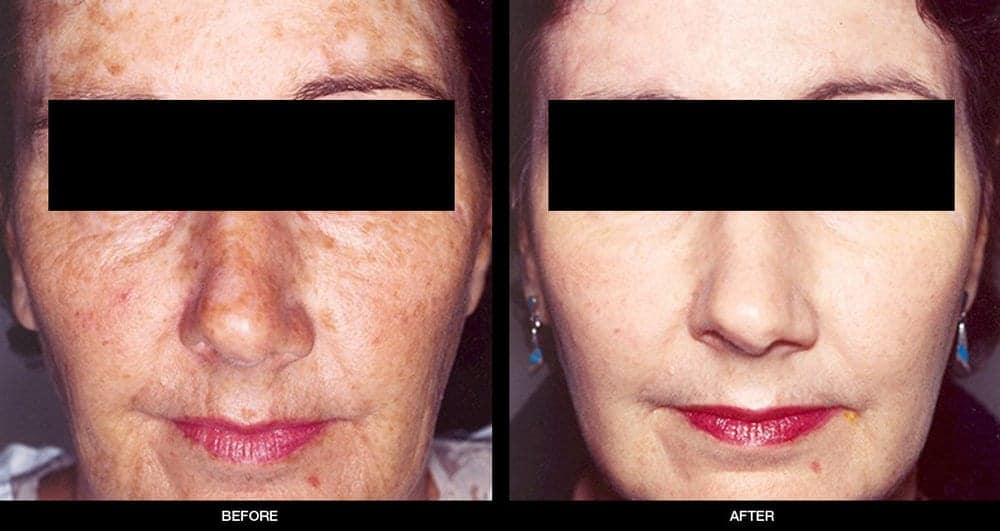Chemical Peels Show Results: Let Your Natural Beauty Shine
Life is hard on our skin. Sun spots, acne, scarring, and getting older all shows in our faces. There are many aging factors beyond our control: we can’t always dodge the UV rays of the bright beaches, avoid every single pimple, and we certainly cannot escape gravity and age.
Chemical peeling, combined with laser resurfacing, microdermabrasion or soft-tissue fillers provides a way to help our bodies forgive years of damage. The treatment is cost-effective and customized to the needs of the individual patient.
What is a chemical peel?

A chemical peel, also called chemexfoliation, is a solution that may be applied by a small brush or swabs to the skin of the face, neck, arms and hands. It is one of the least invasive procedures used to improve the appearance of your skin. The chemical causes the outer layers of the skin to lift away from the deeper layers. As the skin heals, the appearance is improved by the younger softer skin becoming exposed.
The most commonly used chemical in these treatments is TCA. It’s popularity is due to the fact that it effectively reduces sun damage, pigment spots and acne scars. Your plastic surgeon may select another type of chemical for you, however, based on the nature of the skin problem to be treated.
What skin conditions are helped by a chemical peel?
The most common conditions that are improved by chemical peels are those due to acne scarring and even problems caused by sun damage, such as irregular skin pigmentation, scaling, freckles and pre-cancerous keratoses. Other conditions benefited from this treatment are:
- Fine lines and wrinkles
- Melasma (skin darkening due to pregnancy or birth control medications)
- Age and liver spots
- Rough skin and scaly patches
- Improve the appearance of mild scars
- Improve the look and feel of dull or porous skin
The treatment usually provides skin benefits for long periods of time, as new lesions or patches are less likely to appear. Conditions that are not generally improved by chemical peels are sagging or bulging skin and severe wrinkles. These types of conditions would better benefit from other types of cosmetic procedures, such as a lift, laser resurfacing or soft tissue filler.
What is the procedure for a chemical peel?
Before the procedure, your cosmetic surgeon will provide you with a set of instructions, such as eliminating certain medications and preparing the skin with topical creams. Sometimes they will also suggest medications such as antibiotics or antiviral drugs. Prior to the procedure, the surgeon will thoroughly cleanse your skin and ensure that your hair and eyes are well-protected. The chemical solution will be applied with a brush or swab to the skin, and this will enable the fresh rejuvenated skin beneath to appear over the course of several days. Most patients experience a sensation of warmth or heat that lasts several minutes, followed by moderate tingling. If a deep peel is required, the discomfort may be soothed by pain medications.
Following the procedure the skin will be sensitive as it peels and heals. The skin may be red and tender, and after several days will have a scaly look. Medium-depth or deep peels may result in water blisters and swelling. Bandages, necessary to protect against damage or infection, will be removed within several days. Once these are removed, avoid sunshine by wearing broad brimmed hats and use broad-spectrum sunscreen.
Chemical Peel Results
More than one million people received chemical peels within the past year. And while we could talk up the benefits all day, the proof is really in the process. Check out these before and after shots to see just how effective chemical peels can be.


Millions have seen similar results to the ones you see above, and for an incredible wide range of skin conditions.
Chemical Peel Cost
According to the American Board of Cosmetic Surgery, the cost of a chemical peel ranges between $600-$900 (U.S. average). The actual price of a peel may vary significantly. The type procedure you choose, the cost of living in your region, and supplemental medical expenses that are attached to the procedure will all affect the price. Some home application light peels can cost as little as $150 while extensive peel work that requires medical supervision can cost up to $6000.
Chemical peels are a safe, and usually affordable option. If you’re interested in learning more, contact Dr. McIntosh for a no-obligation consultation.
